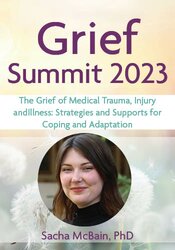The Neuroscience of Trauma and Mechanisms of Change
- Key brain areas involved in trauma
- Fight, flight, freeze, fawn survival responses
- Clinical implications of the freeze response
- The neuroscience of EMDR, exposure therapy, and cognitive therapy
Connect Clients to a Diagnosis: Trauma Assessment Tools
- Simple vs. complex trauma
- Intergenerational trauma
- Symptom clusters and physical manifestations
- CAPS-5 and PCL-5
- Primary Care PTSD Screen
- Dual diagnosis
Stabilize Your Clients Prior to Trauma Work
- Trauma treatment roadmap – order of operations
- Bottom-up techniques to reconnect and feel safe in the body
- Self-soothing techniques
- Grounding strategies
- Breathwork
- Gauge when a client is ready for intense trauma/cognitive work
Proven Skills and Techniques from Evidence-Based Approaches
- Somatic Approaches: Address Physical Symptoms of Trauma
- Relevance of Polyvagal theory and early trauma
- Assess for readiness to apply somatic tools
- Teach body awareness
- Manage unease with “Felt sense” exercises
- Resourcing strategies to create a safe space
- CBT Coping Skills: Manage Emotions
- Identify inaccurate trauma-related cognitions
- Exposure, titration, and pendulation to slow emotions
- Cognitive reframing and reappraisal interventions
- Memory reconstruction techniques
- EMDR-Based Techniques: Resolve Traumatic Memories
- Adaptive Information Processing Theory
- EMDR vs EFT vs neuromodulation
- Resourcing strategies
- Combine memory reprocessing with cognitive restructuring
- Using “restricted processing” with complex trauma
- Narrative Therapy Exercises: Rewrite Traumatic Experiences
- Interventions to help clients talk about hotspots
- Reclaim identity with the “Tree of Life” exercise
- Awareness and closure - create life stories
Solutions to Trauma Treatment Roadblocks
- How to handle the angry client
- Strategies for the resistant trauma client
- Boundary concerns
- Dealing with crises, suicidality, substance use
Reintegration and Post-Traumatic Growth
- Better than normal - the neuroscience of post-traumatic growth
- The therapeutic alliance as a brain-based approach
- The power of forgiveness in moving forward
- Meaning making exercises
Research, Limitations, and Potential Risks










